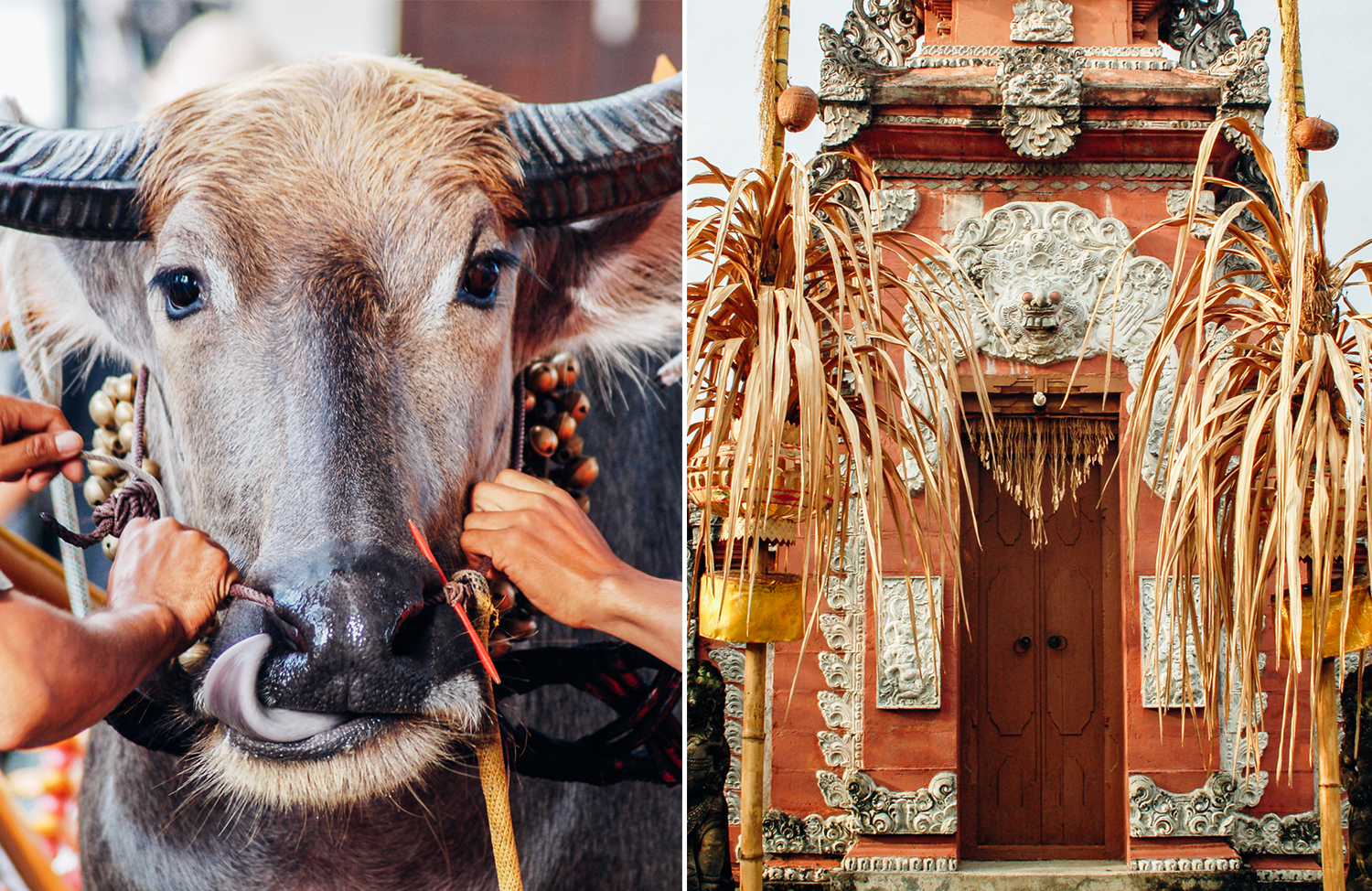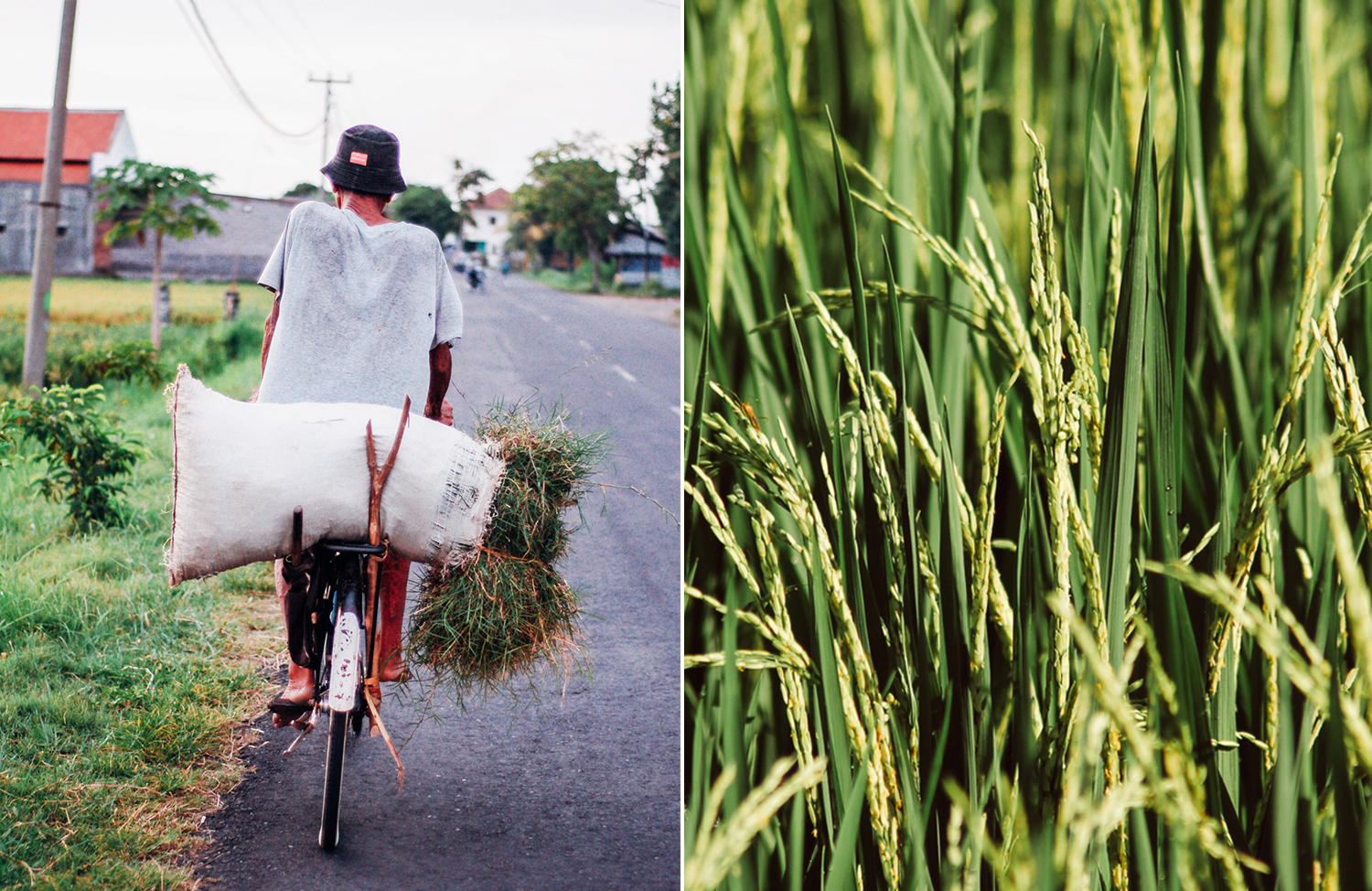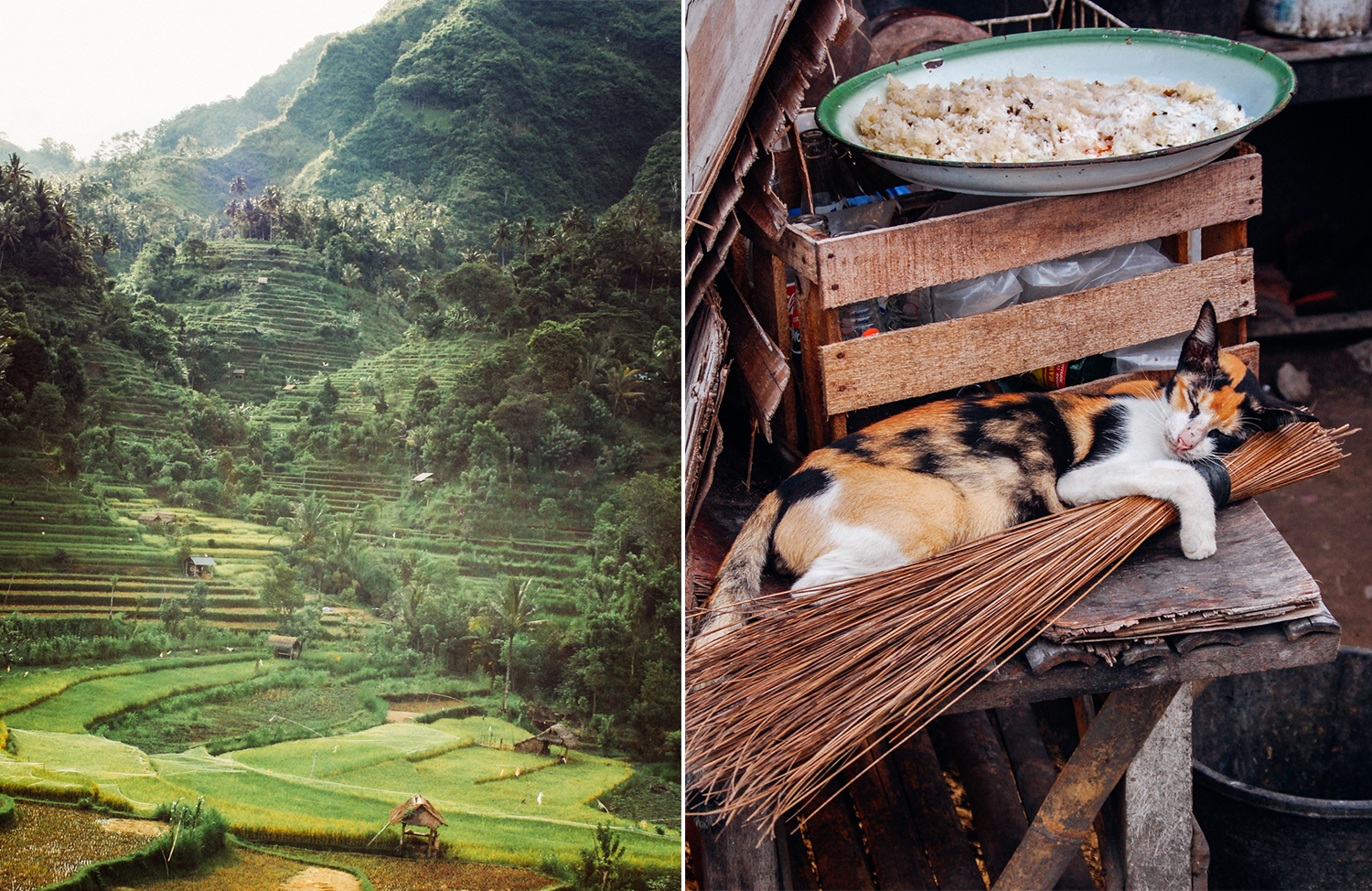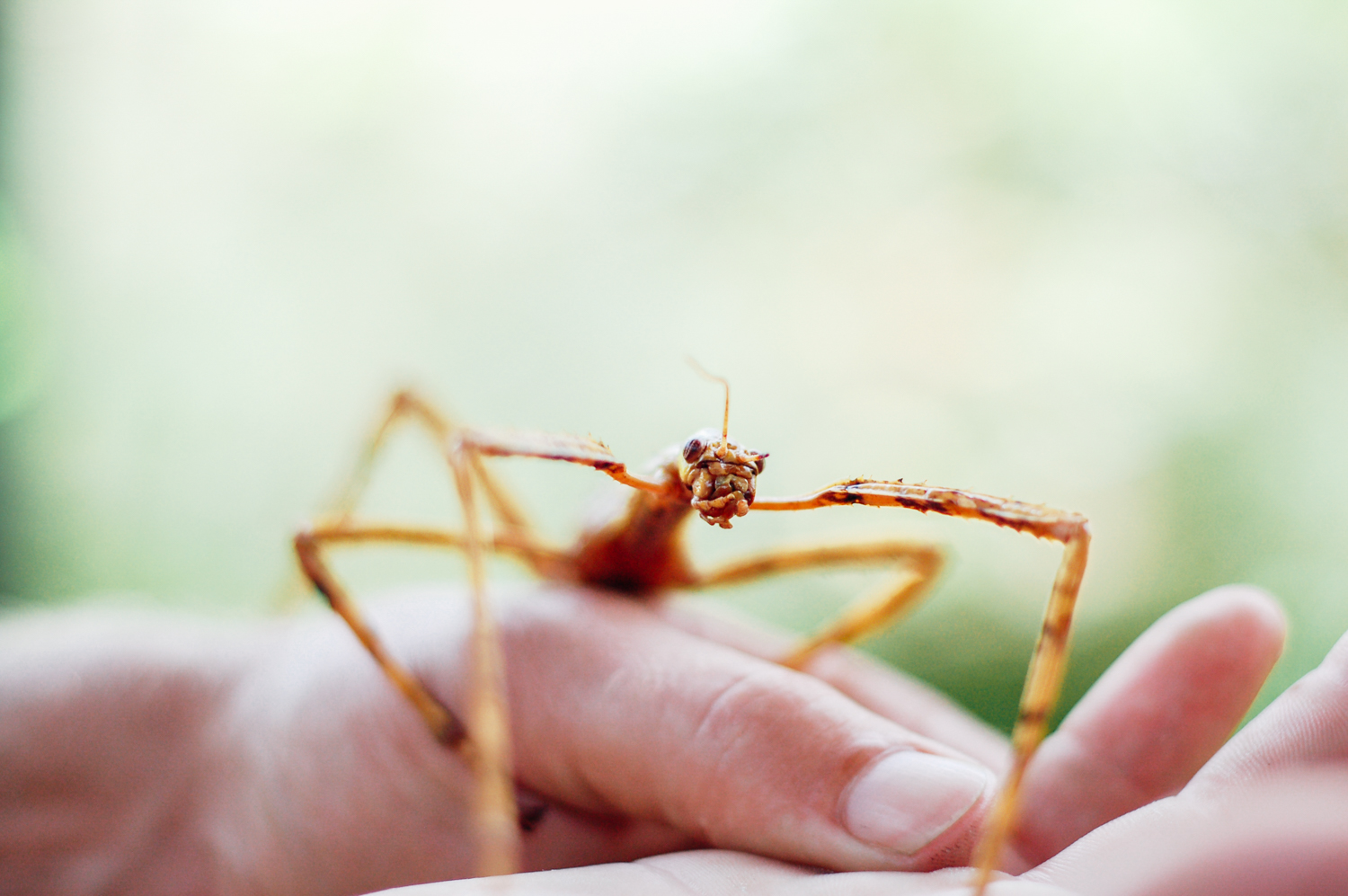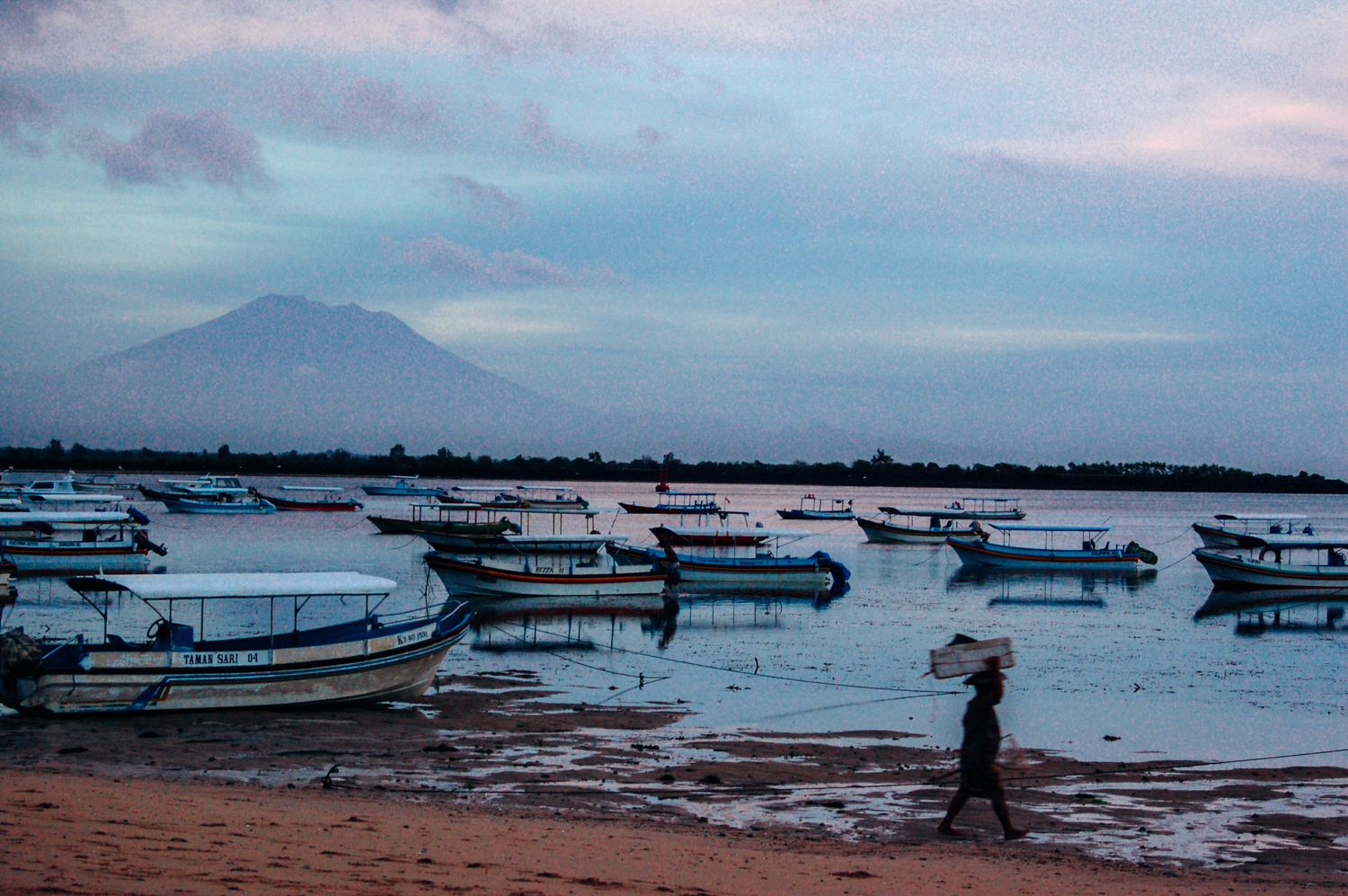BALI
Denpasar
Good shopping makes a great vacation even better, and Bali is truly a shopper’s paradise. For the most authentically Balinese shopping experience, head to the capital of Denpasar. The pollution is bad and the driving much worse, but it is definitely worth the trip. If you dare to brave the streets on a moped (during any part of your stay in Indonesia, in fact), I highly recommend it as you’ll forever be talking about this adventure. Join the legions of Balinese in traffic – from old grandmothers to farmers with a crate of chickens to families of four – all atop one moped – and head to the sprawling main market off the street of Gajah Mada. This is where the locals shop for meat and produce and flowers for the daily offerings, and where you can score a tasty treat or two. Adjacent Sulawesi Street hosts the best fabric stores in the city where you can find a wide variety of silks, lace, and batik prints for a fraction of the price elsewhere.
Beaches
Being raised in Hawai’i gives one the disadvantage of being supremely spoiled when it comes to enjoying the beach, so I can at times be a harsh critic when it comes to places others deem as “paradise.” First off, I’m not a surfer so I can’t comment on Bali’s reputation as being one of the top surf destinations in the world. Generally we were a bit disappointed with the beaches as most had darker volcanic sand and far too much trash floating in the water. But we were diligent researchers and suffered through all the sun, sand, and snorkeling that the island had to offer. Here are my top 3 picks:
1. Nammos Beach Club (near Uluwatu) – This is by far the most beautiful beach we saw and we often took the hour-long moped trek just to enjoy the stunning view. While I don’t know the exact name of this beach, it can be accessed by a path next to the swanky Karma Kandara resort. Thousands of stairs lead down through the jungle and onto the white sand beach that stretches for miles in both directions. Too tired to walk back up? You can catch the (somewhat questionable) lift back up for a fee. Being next to the resort keeps away the pesky hagglers that roam the other beaches and you can also hit up the thatched-roof beach bar for cocktails and food – although expect to pay New York City prices. Being near a resort is not really our thing, and we spent hours beach combing the endless miles of sand and were often the only people to be seen. There is excellent snorkeling in front of the resort in the shallow waters protected by an outer reef, but beware of very strong currents.
2. Echo Beach, Canggu – We lived a few blocks away from this beach and came here a few times a week for food and drinks at sunset. This beach is definitely not the most beautiful – its greenish volcanic sand makes it appear dirtier than it is, although it had much less trash than the popular beaches in Kuta and Seminyak – and its big waves are great for surfing but not for swimming. But we came for the atmosphere: young and sexy surfers from around the world catching a bite between sets. A small plaza area sits atop the rocky coastline and hosts a handful of cute little restaurants and a few boutiques – some even have an outdoor shower to rinse off your board. Sport your brightest colors and grab a mango lassi and some nasi goreng and enjoy watching the sun-kissed crowd.
3. The beaches near Amed – We absolutely loved this coastal area in eastern Bali and stayed here for a few days after a long moped roadtrip. The narrow road winds along the cliffs and opens up to rocky coves that are perfect for snorkeling or scuba diving. In the off-season we had our pick of hotels, and ended up staying at the lovely Geria Giri Shanti hostel with chic individual bungalows with canopied beds and open showers. The black, rocky beach is not great for sunbathing, but we scored some major beach combing finds with shells the size of our fist. If you are staying in the area, check out the nearby mountain village of Seraya. The arid climate prevents the farming of rice paddies, so the locals weave instead. You can see the process of dyeing the wool and weaving the traditional ikat prints into gorgeous throws and table runners, which can be purchased on-site.
Jimbaran
After shopping in Denpasar and lounging on the beach near Uluwatu, there is no better way to end the day than with a fish feast on Jimbaran beach. Jimbaran is a short drive from Kuta along the coast and this small village features luxury hotels and mom-and-pop stands alike.
The easy option is to dine at any one of 30 nearly-identical restaurants lining the beach that offer a full seafood dinner served on the sand for around $30 per person. But our lovely guide Weka showed us what the locals do: shop at the neighboring fish market and have one of the smaller restaurant stalls throw it on the grill. The fish market itself is a sight to see and offers anything you can imagine. Our group picked up a few pounds of shrimp, prawns, octopus, and snapper and popped open a Bintang to wait for the goodies to grill over coconut husks. The restaurant will give you rice and veggies, along with piles of sambal, to go with your meal – and the entire feast (including the fish) was ours for just $7 each. Cheers!
Western Bali
Tired of the legions of tourists in Kuta and Ubud and the constant calls of “Transport? Massage? Watersport?” that follow them? Hop on your moped and head out west, to the side of the island rarely visited by tourists. While we took the scenic and quite out-of-the-way route of cutting through the mountainous middle of the island and heading west along the northern coast, there is a straightforward “highway” along the southern coast – just beware of the large and fast trucks coming from Java.
I highly recommend the small village of Permuteran, on the northwest coast of Bali. A short drive from the much more popular Lovina, Permuteran is known for its diving. We enjoyed the quiet sandy beaches and charming hotels, and there was some good snorkeling to be found just off shore. Heading further west from Permuteran, the road meanders through tiny villages of thatched-roof houses and the landscape becomes much hotter and drier. There was hardly a soul to be seen, Indonesian or otherwise.
Gilimanuk is a nondescript port-town where one can catch the ferry to Java, but it is a must-visit if only to try the famous Chili Chicken. We located the original chili chicken shack at the back of an old bus terminal and mistakenly ordered two orders of chili chicken. The owner laughed and said “Only one!” which was a relief when we received a whole chicken, completely covered in chili peppers. It was accompanied by 3 different kinds of sambal (chili pepper paste). We sweated and burned our way through the delicious chicken, much to the amusement of the other local patrons, each of whom had their own puddle of sweat under their seat.
The western towns of Bali are Muslim and have quite a different feel from the rest of the Hindu island. Negara features mosques and much more covered women, but the people are no less friendly and the town is refreshingly devoid of tourists. Take a short detour to the traditional fishing village of Pengambengan to see the incredibly beautiful fishing boats only found in this area. A riot of psychedelic colors and much larger than most Balinese fishing boats, these beauties travel in twos with the captain sitting in the ornate crows nest.
A must-see in Negara – and truly the highlight of our whole Bali experience – are the buffalo races held in nearby Perancak. The racing season runs on Sundays from July through October, but there were smaller practice races while we were there in February as well. The buffalo is a surprisingly adorable animal with a stocky build and fuzzy beard and is adorned with red and golden bells. The race is not for the faint of heart - the dirt track doesn’t have fence to block the stampede, and the jockeys whip the buffalo with a thorny stick - but it is a truly authentic Balinese experience.





